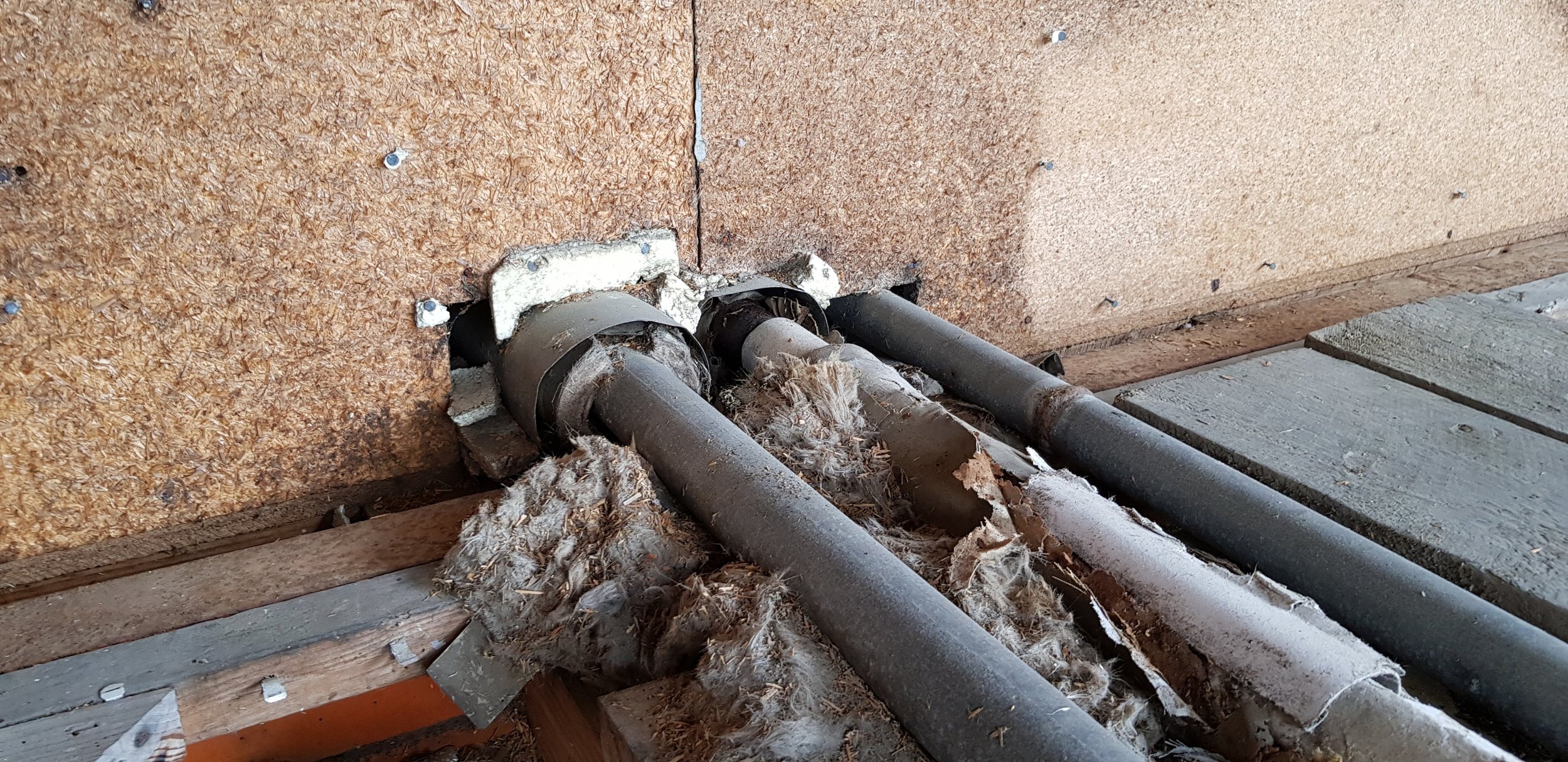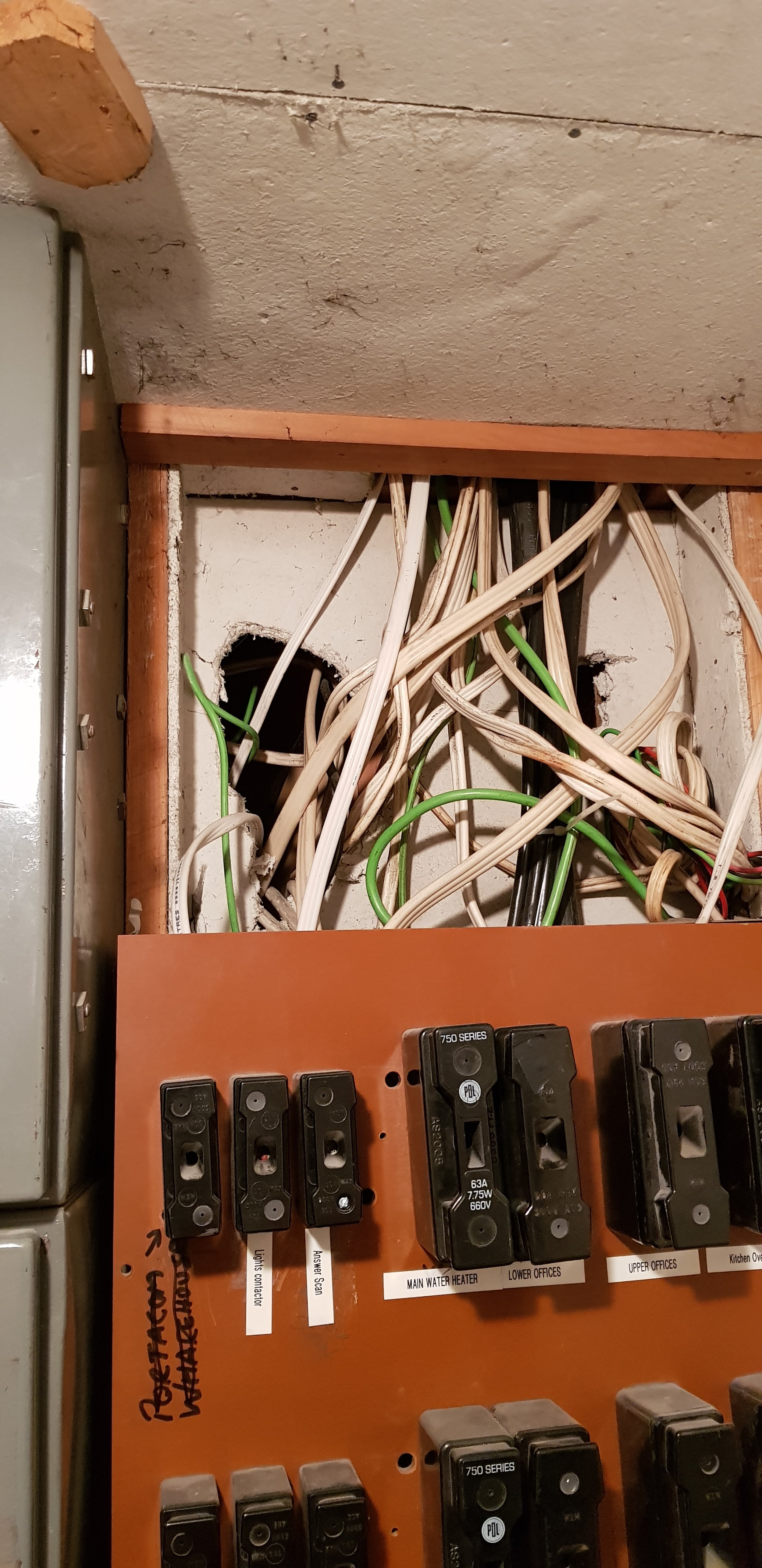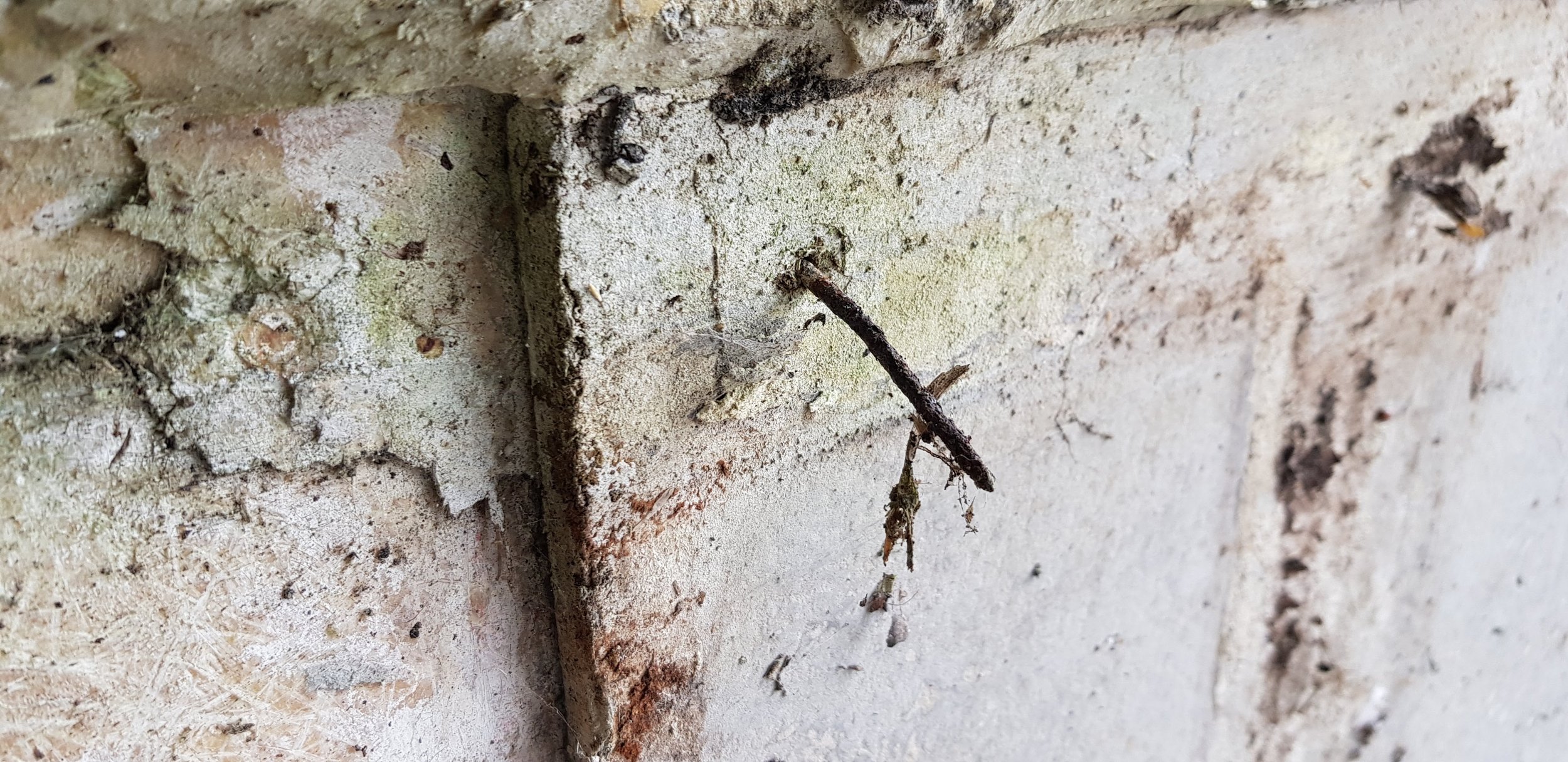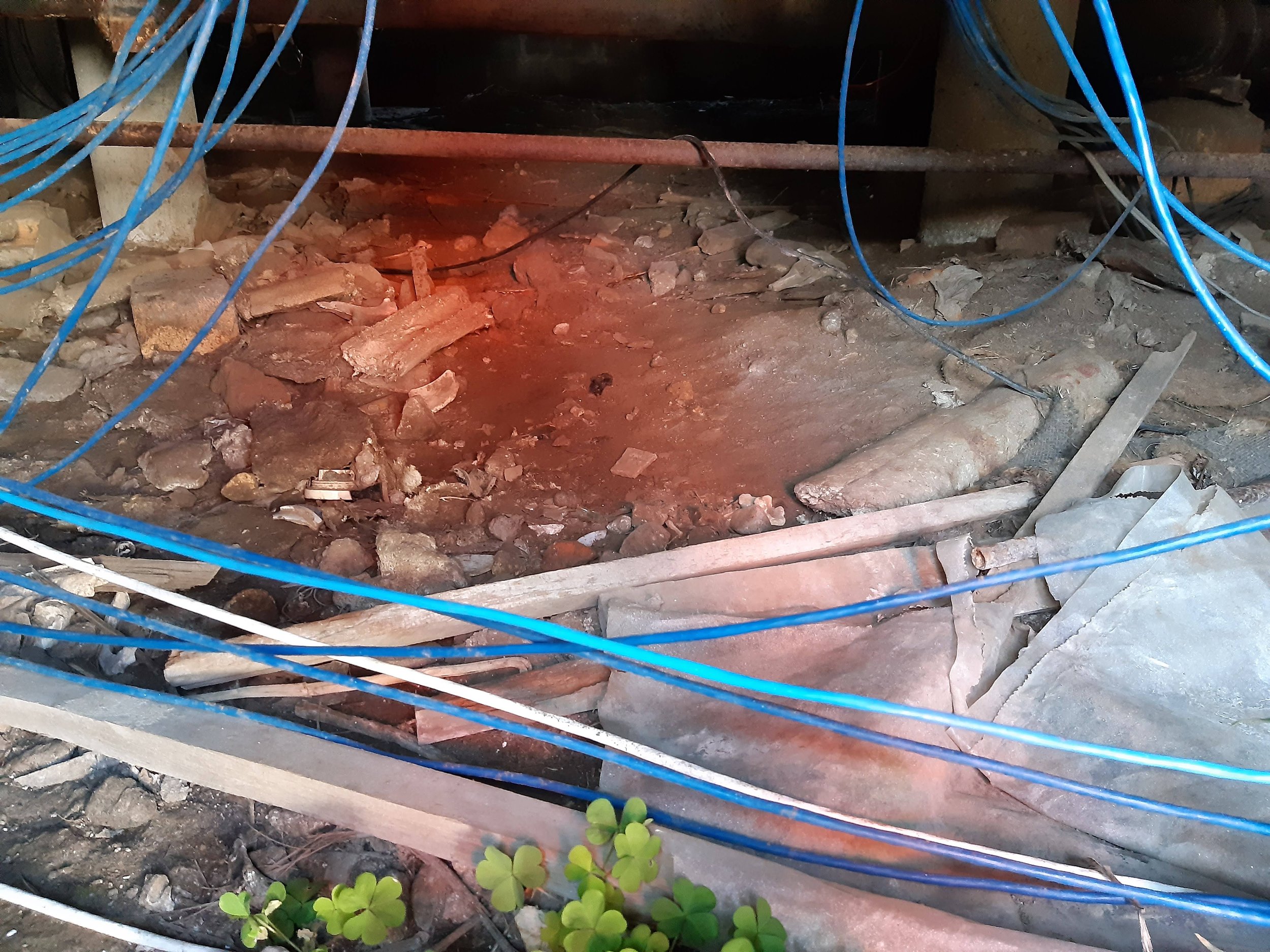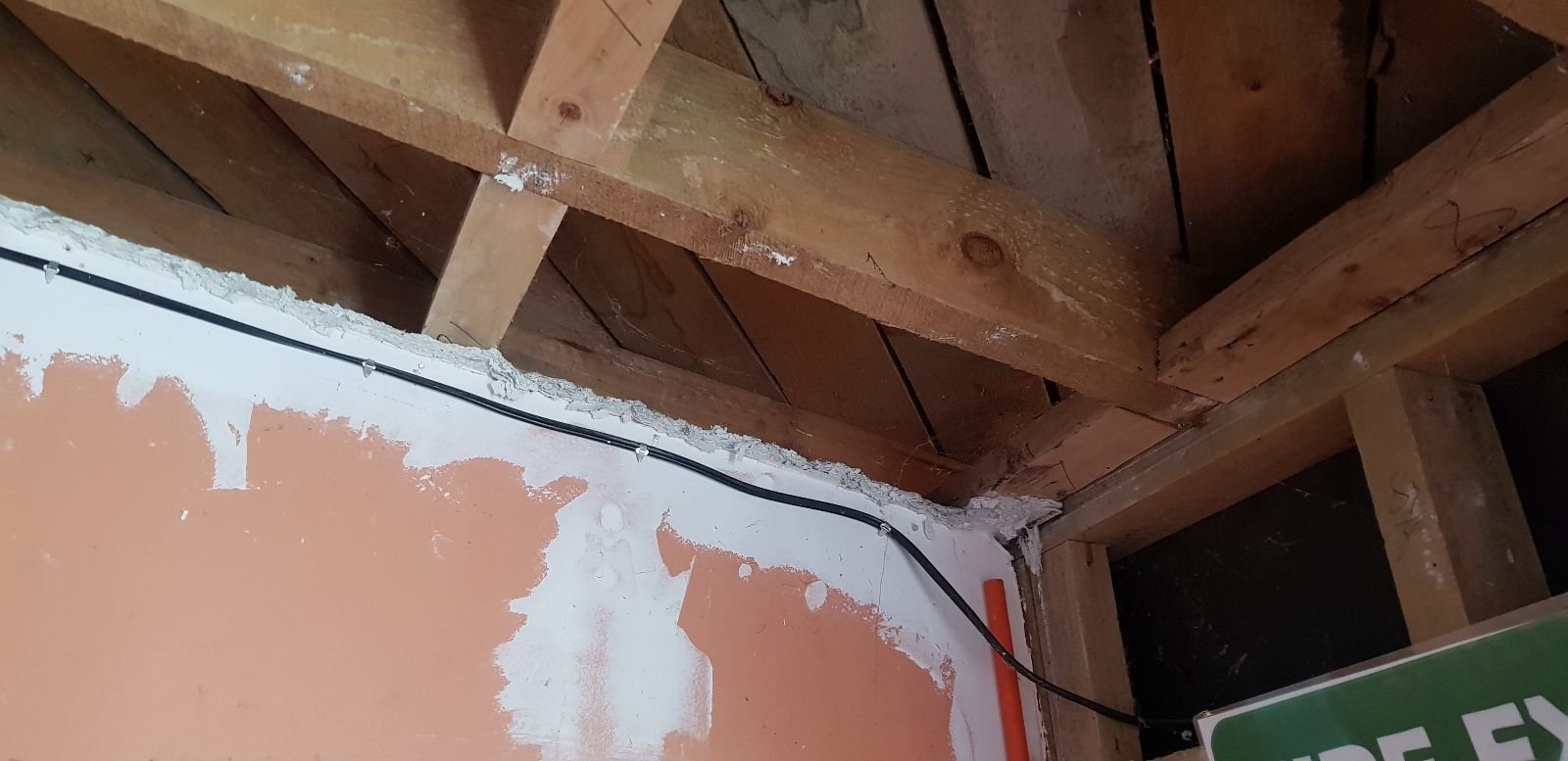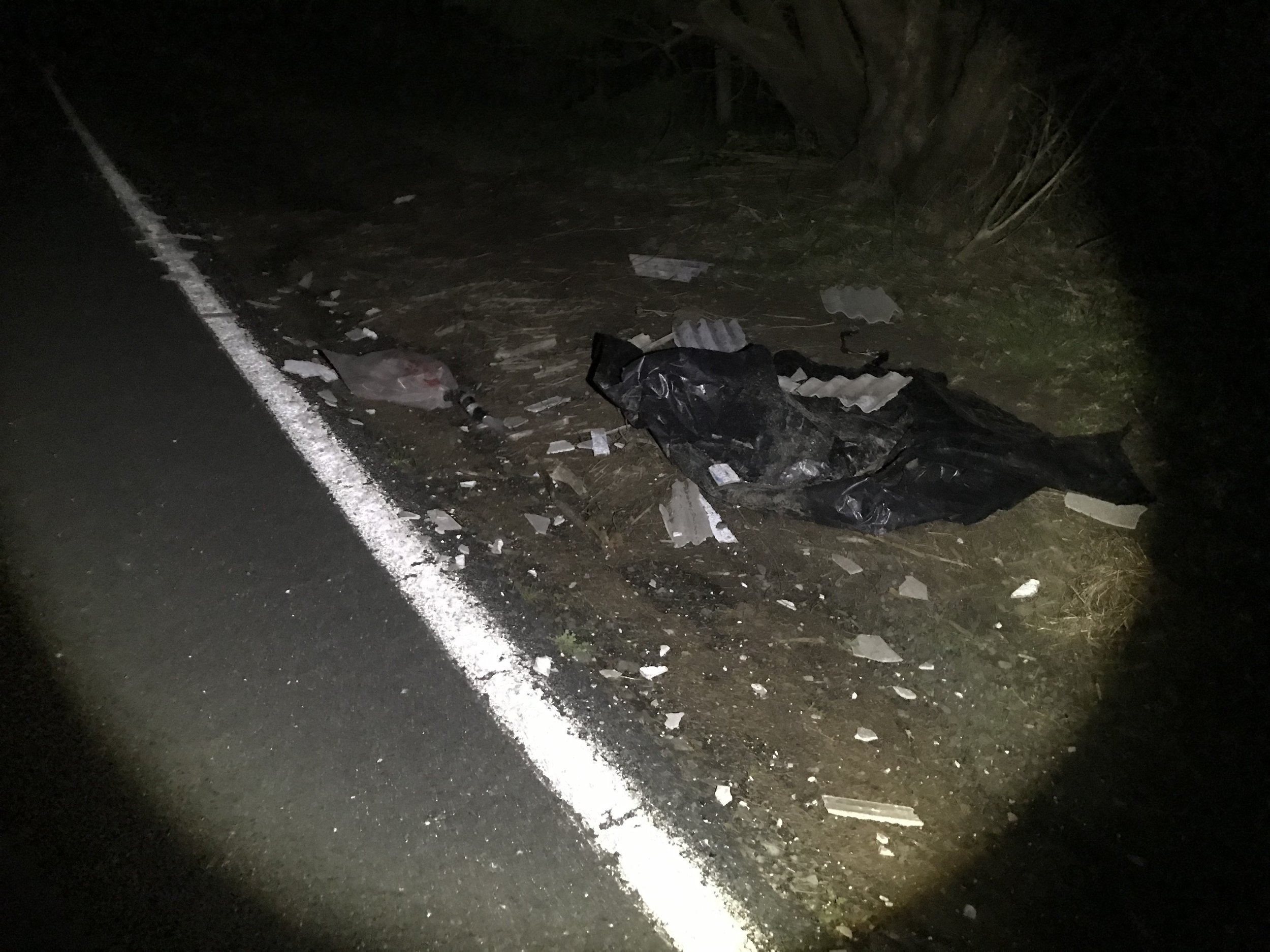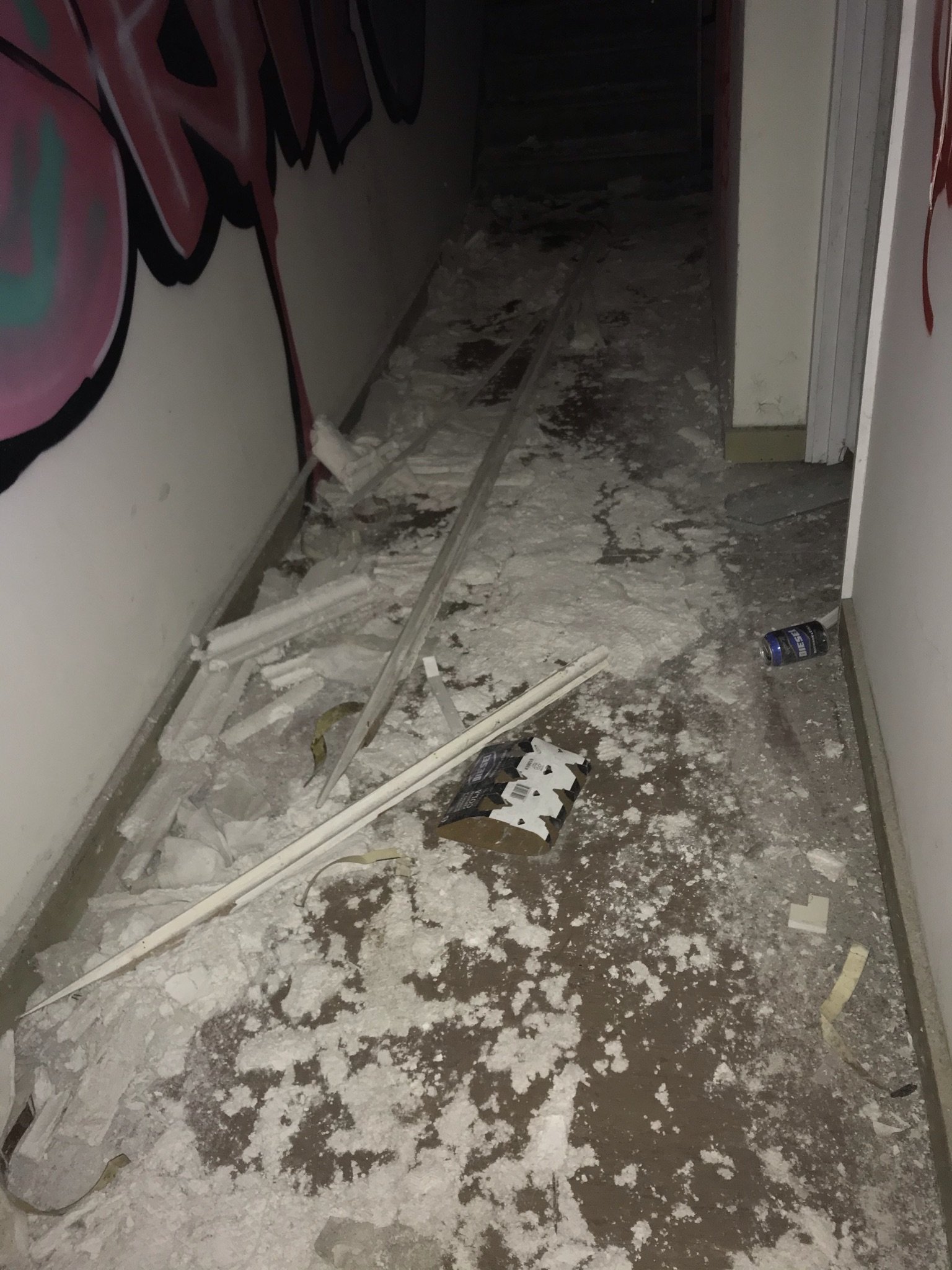Don’t create an asbestos horror story….
Asbestos doesn’t break down, it isn’t going anywhere fast. We have been dealing with it for decades and will continue to deal with it for many more.
During our work, we unfortunately come across asbestos containing materials (ACM) in bad condition. Sometimes it is just time that has weathered and damaged these materials, but too often it is human damage.
We often talk about the asbestos legacy, but do you want to be part of a positive change, or one of the horror stories?
Here are some examples we have come across:
Far left - Leaky pipework needed the insulation removing to allow for repair. The plumber removed the machine made mineral fibre (MMMF) insulation and uncovered an asbestos card wrap beneath. This plumber did not stop work though, they continued tracing the leak and removing insulation. Once the leak was fixed, the insulation was left in this condition. The area stayed in use, with asbestos fibres that could be easily disturbed. One of our surveyors found it and isolated the room until the asbestos card could be properly removed and cleaned up.
Centre left - Asbestos insulating board (AIB) panels are commonly used to line electrical cupboards to reduce the risk of electrical fire spreading. AIB is easily disturbed, especially when someone is rewiring. Here you can see a large hole an electrician made when rewiring to the switchboard. There was debris throughout this cupboard. Although it wasn’t an area that was frequently used, every time someone entered the cupboard, there was a high risk of being exposed to asbestos fibres. Thankfully, once we found it, we were able to arrange clean up very quickly and for the damaged panel to be sealed.
Centre right - Wall panels with AIB backing panels. Sometimes asbestos has been prefabricated into a product, or it might have been overclad. This makes it hard to know what you are working with. This panel was discovered during an asbestos demolition survey carried out before the building was demolished. There was lots of evidence of the panels being drilled over the years. If you don’t know what you are drilling, stop work and get it checked out by a competent person.
Far right - Asbestos pipe lagging was found all over the floor in the subfloor of this building. It looked like it had been knocked off accidentally during the installation of new WiFi network wiring. Again, this is an area that is rarely accessed by others, but when anyone else has to go under the building for maintenance, there will be a high risk of asbestos exposure.
Far left - AIB ceiling panels poorly removed in a store room. Our surveyor worked out this work had been done around 8 years ago based on the records. There was debris found throughout the room and on the stored items. Asbestos removal standards have gone up considerably since these panels were removed (although this is poor, even by previous standards).
Far too often, we find that people have paid to have asbestos removed but there is still ACM remaining. This is why it is so important that a clearance inspection is carried out by an independent person (i.e. not engaged by the asbestos removal contractor) and they are competent enough to carry out the inspection. You must also get a clearance certificate before re-entering the area. For friable asbestos removal (Class A), you must use a Worksafe Licensed Independent Asbestos Assessor. There is a register of license holders on the Worksafe website and make sure you do your due diligence.
Also, it is important that you read the clearance certificate thoroughly as there may be exclusions and ACM left in the area. This may be due to them not being in the scope of removal work or could not be fully removed. They must be sealed and left in good condition.
Centre left - Another pipe that was insulated with non-asbestos MMMF over asbestos insulation. On this occasion, the plumber needed to change a valve and pulled off the insulation, again leaving it for everyone else to breathe. We arranged for clean up to make the area safe for others.
Centre right - One of our surveyors was driving home one night and she discovered asbestos cement sheets fly-tipped across the road. It was left for any member of the public to come across and for the council to clear up. Don’t want rates to increase? Don’t fly tip! If you contract someone to carry out asbestos removal for you, make sure you due diligence and ensure they are licensed to do asbestos removal (there is a directory on the Worksafe website). Also, you can ask to see receipts for disposal. The landfill centre issues these as proof of responsible dumping.
Far right - Asbestos pipe lagging was discovered like snow on the ground of this building. It was found during our demolition survey. It seemed that copper pipework had been taken out of the building leaving all the pipe lagging all over the floor. This building had been vacant so no one was going in there at this point, but it was a shock for us and made us grateful for our PPE/RPE!
Our final take on this horror story blog: Don’t put yourself at risk and, most importantly, please don’t leave asbestos in bad condition so everyone else can be exposed.
Do you need help with asbestos management? We can help you with asbestos surveying, asbestos management plan, removal or remediation of asbestos and we can support you with your long term asbestos management strategy. We also offer asbestos training to help you become more aware of the hazard and risk.

